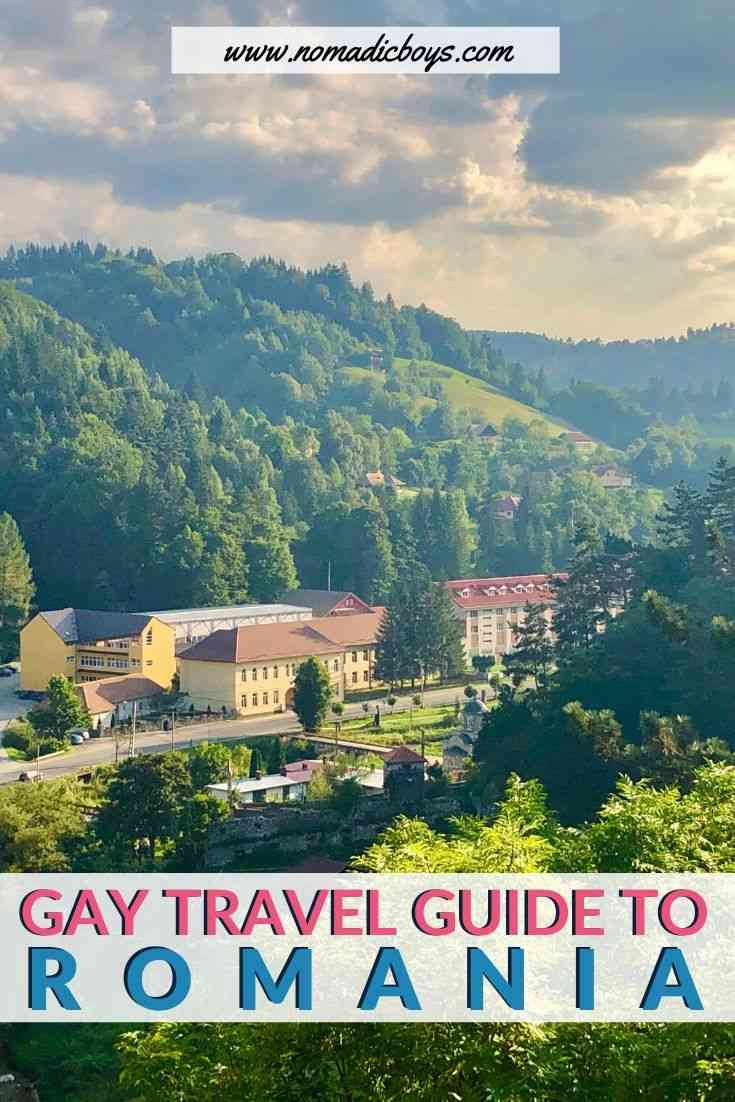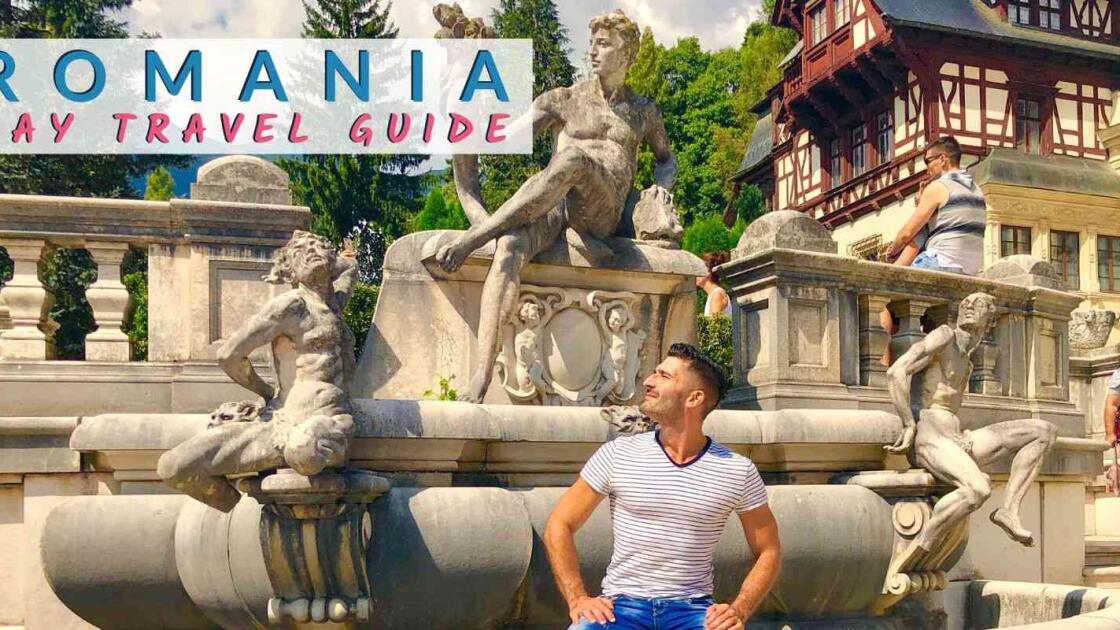TERMS OF USE: There is a chance that some of the content on this page has changed since it was last updated. By reading this article, you consent to our Terms of Use and Disclaimer. Happy Travels!
DISCLOSURE: Some of our posts may contain affiliate links which we may receive a commission if you choose to book something through one of our links.
Our detailed gay guide to Romania to inspire and help you plan your own visit to this underrated country in East Europe.
Romania, the homeland for the goths at heart.
After all, the central region of Transylvania is the inspiration for the legendary novel “Dracula”. Hands up, who didn’t have a vampire phase? What gay teenager didn’t pine after Robert Pattinson in “Twilight”? But despite its cryptic and haunting backdrop, Romania as a whole is delightfully pleasant.
With cities that reflect the medieval villages we see in the history books, locals that are passionate about life, and streets that are bursting with character and natural scenery, Romania took our breath away and completely surprised us! Not to mention all the many charming old churches, the range of delicious food, and the friendly locals. For us, Romania embodies all that is magical about Eastern Europe.
From the outset, we knew Romania wasn’t the most gay-friendly country that we’ve been to. Yet despite this, we found several queer hangouts in the main big cities, especially in Bucharest. Plus, when we did find these spaces, we found them to be just as erratic, wild, and party-centric as they would be in London, Barcelona or New York. If not more so!
We’ve put together this LGBTQ country guide for Romania based on our personal experience to help inspire gay travelers wanting to see just what Romania has to offer.
Gay rights in Romania
So, whilst homosexuality is legal in Romania, local attitudes towards gay rights are conservative. There are small pockets of LGBTQ acceptance throughout the cities, but in the rural areas, queer folk is forced to live in the shadows. Though we had to monitor our behavior when out in public, and keep PDA to a minimum, we still felt comfortable going about our travels. There were various gay-friendly spaces where we could let our hair down.
In terms of anti-discriminatory laws, LGBTQ people are fully protected (thanks largely in part to Romania's accession to the EU in 2007), though gay marriage is outlawed. The Romanian army also enforces a ‘Don’t Ask, Don’t Tell’ rule, so queer people are ‘technically’ allowed in the army… but you really wouldn’t want to be too out!
Despite its flaws, Romania has come a long way in such a short amount of time – homosexuality was legalized in 1996, and things are slowly improving. For example, a referendum to ban same-sex marriage failed to go through in 2018, and while this is due to low turnout, it still offers a sign of hope that things are changing. So, you never know, one day it may even end up appearing on our list of the most gay-friendly countries in the world!
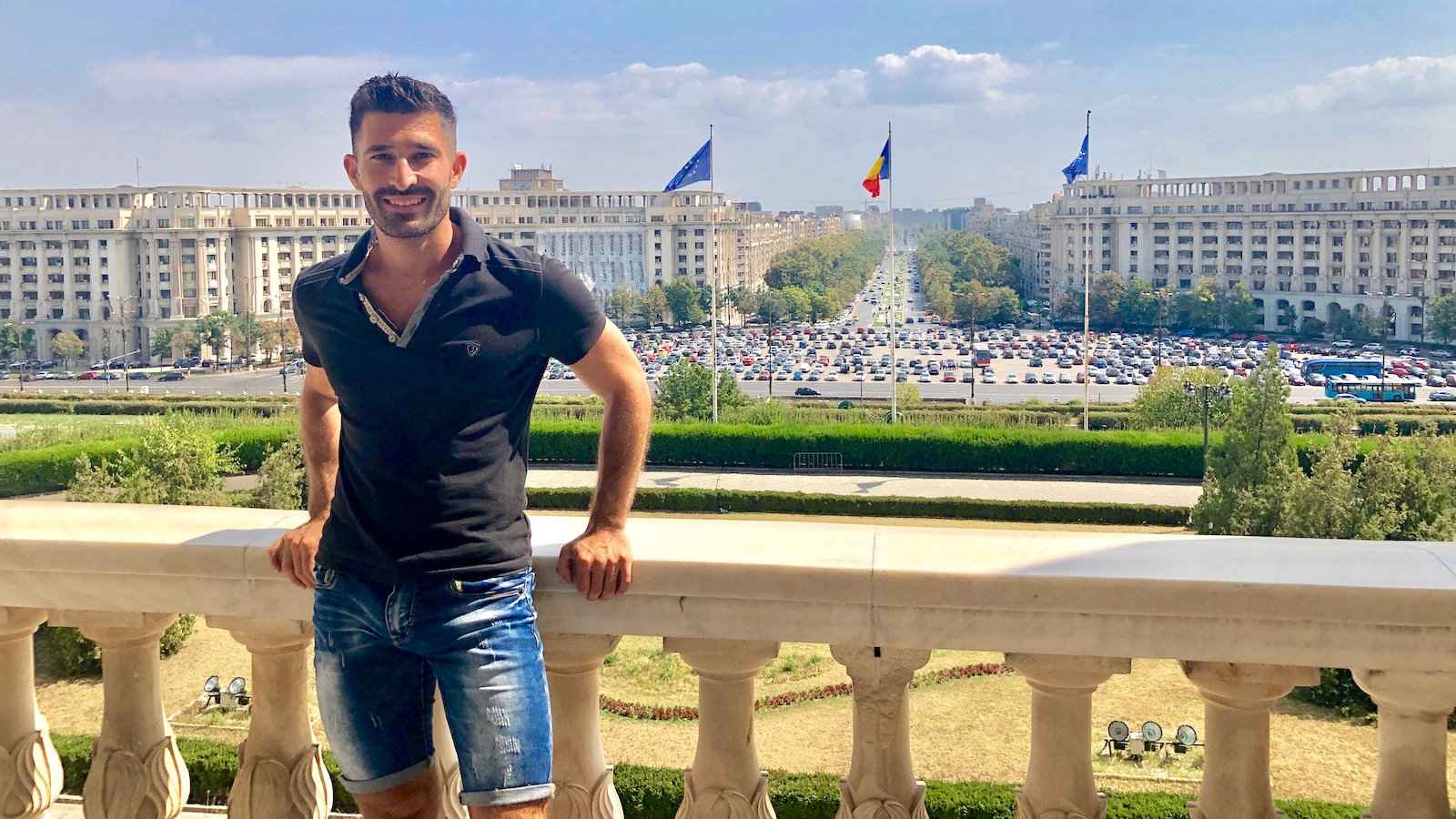
How welcoming is Romania towards gay travelers?
Romania generally is not the most gay friendly country in Europe. Homophobia is rife and we certainly felt it as a gay couple traveling around the country. The most obvious example was when we contacted several hotels prior to visiting, asking them whether they're ok to host a gay couple. Unlike in, say Georgia (another very Orthodox religious East European country), where we received nothing but welcoming responses, quite a few of the hotels in Romania we reached out to (which for the record, we found on online LGBTQ directories recommending them!), replied along the lines of:
“Yes, we welcome you, but, as long as you do not show it obviously in public because we have families with children staying here…”
The hotels that replied in this manner include “The Rembrandt Hotel” in Bucharest and “Hotel Aro in Brasov” – our warning to you, avoid!!!
The hotels we listed in our gay guide to Bucharest we can attest to are gay friendly and welcoming to LGBTQ travelers. These include “The Mansion Boutique” and “Hotel Trianon” – both in Bucharest. Otherwise, be sure to check reviews thoroughly before making any reservations, and make sure you contact them first to ask if they’re ok to host a gay couple.
Overall, the big cities across Romania are making huge strides towards equality, particularly in Bucharest and Cluj. Bucharest, in particular, has a vibrant Old Town with a small gay scene, with bars like Control, and Q Club. Over in Cluj, a small city, but with a large student population, there’s a young, trendy, hip vibe. Cluj's gay scene is dominated by the super talented drag artist and LGBTQ activist, Lucian Dunăreanu, who organizes the “Gay Film Nights” and owns Cluj's main gay bar, Delirio.
In terms of public displays of affection, we recommend avoiding this in Romania, unless you’re in a gay friendly environment. Society is still very conservative and extremely religious here.
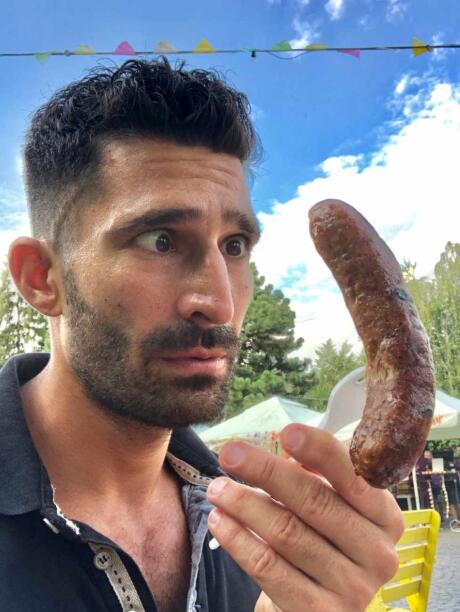
Top experiences in Romania for gay travelers
There are actually a lot of sites to cover in Romania – from the gay bars of Bucharest to the many beautiful castles dotted around the country, including the famous Bran Castle. You could easily spend 2 weeks exploring Romania and never run out of gorgeous things to see:
Check out Bucharest's gay scene
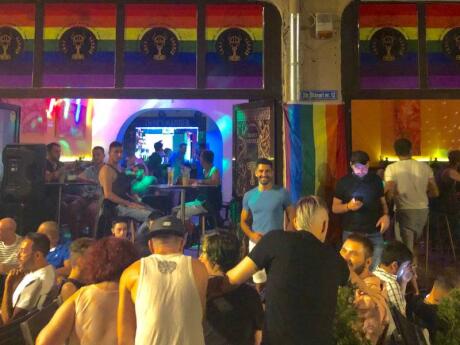
Bucharest’s gay scene may be small, but hey, some of the best things come in small packages. We were surprised to discover quite a few different hotspots where gay folk could hang out. From Q Club to Control, the gay bars and clubs were just as lively as the kind you would find anywhere else. After all, stepping into a gay space is like slipping into a pair of slippers. They always fit. It always feels comfortable. It always feels like you’ve come home. You can also join a Gaily tour of Bucharest with a local guide to show you the main sights of Bucharest along with a few of the best queer-friendly bars.
Explore Bucharest Old Town
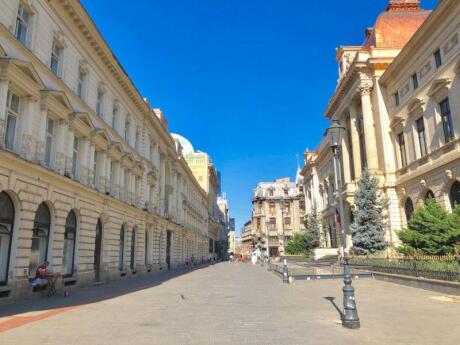
As the shining capital of Romania, Bucharest’s Old Town looks like something straight from the pages of a storybook. With architecture that dates back centuries, the Old Town streets are bursting with the pride of its fascinating past. We think the best way to fully take it all in is with an LGBTQ like the Gaily gay tour of Bucharest. With this tour, you’ll be paired with a local guide and get all the niche historical and cultural nuggets that you don’t always get from other tours, including an insight into what gay life is like in Romania.
Visit the Parliament Palace of Bucharest
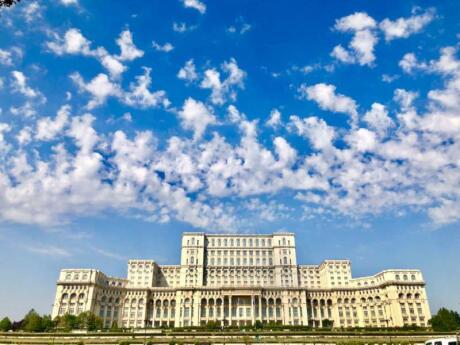
Bucharest's Parliament Palace is the second-largest building in the world, beaten out only by the Pentagon in Washington D.C. Although, when it comes to the most weight, the Parliament Palace takes the cake. Weighing over 4,098,500,000 kilograms, it is the heaviest building in the world, and certainly one of the most opulent we've seen. Also get your money pic at the balcony where Michael Jackson famously greeted his fans back in 1996 when he cried out by accident, “Hello Budapest!”. You can turn up and arrange a tour yourself (though call in advance to book your time slot to avoid disappointment) or book one of the Bucharest skip-the-line tours!
Search for Dracula at Bran Castle
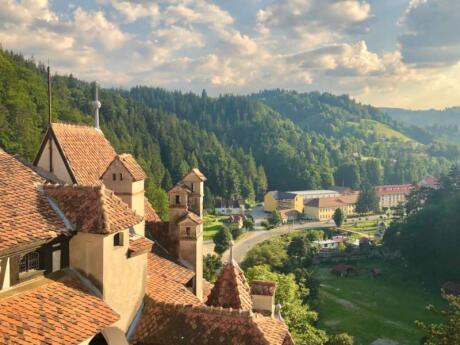
As hard as we tried, we couldn’t find Tim Curry masquerading as a sweet transvestite from Transsexual, Transylvania when we visited Bran Castle on a day-trip from Bucharest. Though what we did find was just as exciting. After all, this was the apparent fabled location that Bram Stoker’s Dracula is believed to have lived. The reality is it isn't – Vlad the Impaler actually lived at the Poenari Castle, but Bran Castle has instead managed to capture everyone's imagination better and become one of the top tourist attractions of Romania! It is extremely touristy here, to the point of being a bit suffocating, but the views of Transylvania from the castle make the journey worthwhile. The castle’s past is also fascinating. Having been around since the early 1200s, it has been home to royal families and was a medieval fortress. It is certainly impressive, but expect to be part of a long slow-moving line of people walking through it.
Wander around Brasov
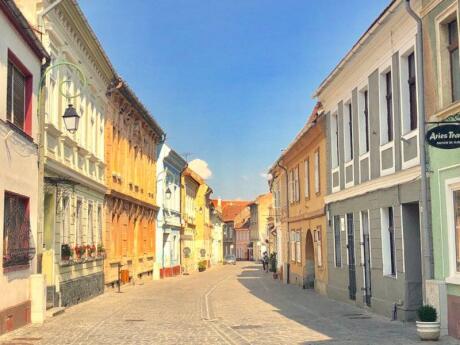
High up in the Transylvanian region is the mountainous town of Brasov. Ringed by the Carpathian Mountains, and ideally situated to visit as part of a day-trip to Bran and Peles Castles, Brasov is a bustling city that feels like a medieval village. Cobblestone streets and terracotta roof tiles add to its charm, along with lively cafes to stop for refreshment. Make sure you visit the Gothic-style Black Church (blackened by smoke during the great fire of 1689), the narrowest street in Romania (the Rope Street) and the many old watchtowers that are all that remain of the city's walls.
Pose with statues at Peles Castle
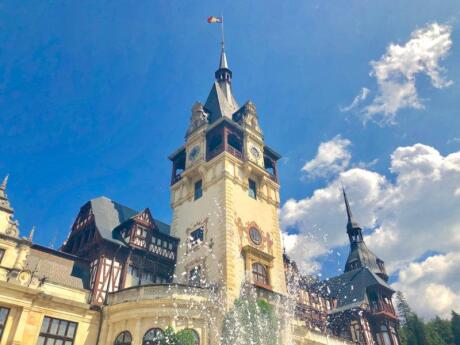
Eat your heart out Buckingham Palace! Peles Castle is a stunning building that houses the Peles National Museum. Whilst it belongs to the royal family of Romania, the King decided to continue housing the museum, so people could learn about the history of the castle. It does still get used for fancy ceremonial events from time to time and has also been a major filming site for several movies. There are gorgeous fountains in the castle gardens, including some with rather homoerotic statues that Stefan couldn't help posing with – see the cover image of this post! We definitely think visiting Peles Castle is a must while you're in Romania.
Relax in Constanta
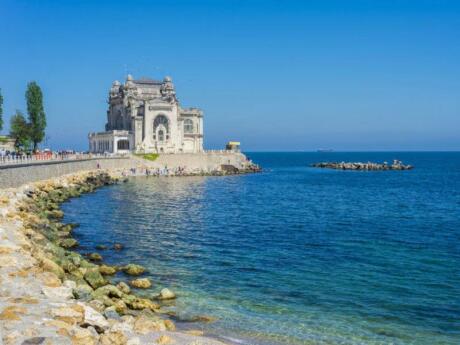
Nestled on the shore of the Black Sea lies a beach resort town called Constanta. We can never last too long in a new place without scouting out its nearest beach. So we were thrilled to take the time to visit Constanta. Outside of the beach, there are tons of museums across the city to discover. There is the Natural History and Archaeological Museum, which provides vast materials from the ancient Greek and Roman eras. While there isn’t a lot of English signage, it is well worth visiting just for how beautiful the artefacts inside are. Sparkling jewels, vases, and striking statues are a hard sight to beat.
Explore the region of Maramures
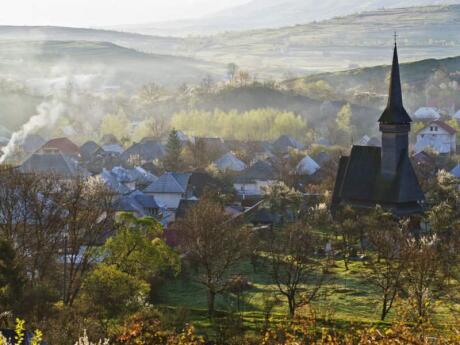
Maramures is described as Romania’s most traditional region, also nicknamed the ‘Land of the Wood’. And it is not hard to imagine why. Most of the houses and buildings are made purely from timber, with just a steep shingled rooftop. You can visit the Maramures area from Cluj, and get to know the locals who take great pride in their traditions that have been preserved for hundreds of years. Take in the overwhelming views of the mountains and even wander among some of the last forests in Europe that are still untouched by human hands. If you're lucky you might even spot wild deer, wolves or bears!
Experience cool Cluj
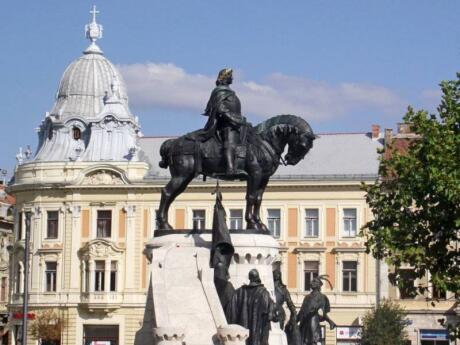
Cluj is probably one of the more accessible parts of Romania, with many budget airlines flying to this fascinating destination. It is also a great place to go to for LGBTQ travellers eager to explore a more hip and alternative queer nightlife scene. The wide array of hipster style cafes and clubs are particularly popular with young students. Delirio Club is considered a hot spot for queer people to hang out in. Cluj has also recently started hosting an annual Pride festival, which really sets the city alive with colour. You can join a walking tour of the city to learn why it's sometimes called Cluj-Napoca and see the best sights.
Visit the painted monasteries of Bucovina
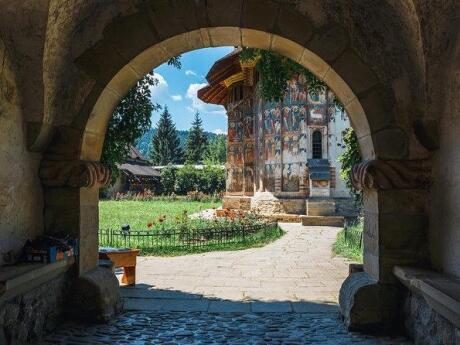
In the northeast of Romania is a region known as Moldavia (not to be confused with neighbouring country Moldova) which is home to eight UNESCO World Heritage rated churches. What makes these churches so special, we hear you ask? Well, they're painted with absolutely incredible Byzantine frescoes that date back from the 15th and 16th centuries! Joining a trip to the villages of Bucovina from Lasi gives you the chance to marvel at the paintings on three of these stunning churches, as well as enjoying the peace and serenity of this idyllic rural area. You'll even get to see the rare black pottery of Marginea being made by local craftsmen.
Gay tours in Romania
If you want to be able to sit back, relax and explore Romania without needing to worry about the logistics, then we recommend joining a gay group tour. You'll be exploring the best of country whilst making a whole bunch of new friends at the same time.
1. Romania, Moldova and Ukraine Gay Tour with Coda Tours
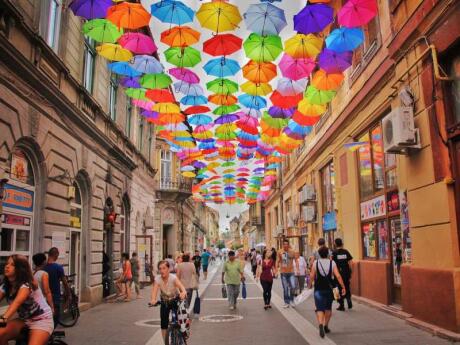
Coda Tours organises fun gay tours that include visits to Romania, Moldova and Ukraine. This two-week gay trip usually takes place every April/May. It includes stays in four or five-star hotels led by a fabulous LGBTQ guide. It's a fantastic way to make new friends, especially if you're travelling solo. We also love that it covers 3 very cool (and highly underrated countries) in 1 trip. Read more about Moldova in our gay guide to Chisinau and also our Moldova LGBTQ country guide.
Coda Tours is offering our readers an exclusive $125 discount valid for this tour. Click the button below to find out more.
Pride and other gay events in Romania
There are several Gay Pride events taking place in the big cities in Romania, which we've listed below. We've also included a handful of other non-gay specific events that we think you should also check out:
Bucharest Pride – May/June
Come out, come out wherever you are! It’s time for all the Romanian gays to come out and play. It’s time for glitter, unicorns, drag queens, dancing, and rainbows. That’s right, it’s time for Pride! Bucharest Pride paints the city awash with colors. Having started in 2004, the festival has gone from a tense display of protest, that was usually met with violence, to a fun and loving party, that is (at best) tolerated by fellow Romanians. With a jam-packed week that sees a march through the heart of the city, parties in various clubs and bars, as well as competitions, you definitely won't get bored. It attracts around 10,000 people annually, and it is only getting bigger and better each year. The main parade starts at around 6pm, with the meeting point at Piața Victoriei. It moves through Piața Victoriei to Piața Universității, via Calea Victoriei, lasting up to an hour. Many groups and activists take part and help contribute to the overall positive, safe and fun nature of the event.
Cluj Pride – June
Pride events across the western world often feel more like a party than a protest. Whilst Cluj Pride does still hold onto its party spirit, it undoubtedly feels like a fight for human rights more than any other Pride we’ve attended. Having only existed for three years, Cluj Pride is about providing visibility to the LGBTQ rights movement in Romania. In 2019, they screamed the term ‘We are here!’, forcing passersby to pause and take notice. It's held in mid-June and features a protest march through the heart of Cluj. Aside from the march, there are lots of fun events held throughout the city. From table quizzes to speed friending, the festival is a fabulous way for tourists to become acquainted with the queer scene, as well as it is for young LGBTQ folk to network with their fellow gays.
Timisoara Pride – June
Timisoara is the baby of Romania’s three Pride festivals, having only been established in 2019. Though it certainly made a startling debut! The queer folk of Timisoara was busy people, as there were several conferences, performances, and workshops taking place around the city that discussed issues within the LGBTQ community, from discrimination to civil marriage rights. The 2019 Timisoara Pride opted not to have a Pride parade, instead of focusing on empowering the hidden LGBTQ youth across the region, as opposed to making a loud, political call for equal rights. It’s all part of a process in advancing the cause, so we personally applaud Timisoara for doing Pride their way!
Untold Festival – July/August
This is one of Romania’s biggest events and sees massive stars from across the world descend onto the city of Cluj-Napoca, from David Guetta to Stormzy. It is four days of non-stop EDM, dance and pop music, where patrons can let loose, party, meet new people and celebrate good music. The initial concept for the festival came from the Romanian love of old fables and fairy tales. The unique backdrop of Cluj-Napoca against the epic performances from beloved musicians helps create an ultra-fantasy for the crowds. It’s like being transported to a whole new land, one where anything feels possible. And if you need any more convincing of how incredible the Untold Festival is, then just know that it has been awarded the title ‘Best Major Festival’ three times in a row at the European Festival Awards!
Art Safari – May
Each year, Art Safari wraps the city of Bucharest with art, colour, music and performance. Tons of exciting exhibitions are held throughout the city, prompting discussions about the kinds of stories and ideas we humans can tell through something as simple as a brushstroke. An exhibition to look out for this year is ‘The school from Bucharest’ by Adrian Guţă that showcases three decades worth of art following the December 1989 Revolution. It reflects the fight for freedom of expression in the political context of the collapse of the communist system through a mix of different painting and sculptures.
Bucharest Dance Festival – multiple editions
Prepare to take one step forward, as Bucharest comes alive with dance. With a competition that sees some of the most talented dancers from across the nation battle it out for the winning trophy, the Bucharest Dance Festival is a fun experience. Solo acts or groups are encouraged to register, with entry fees varying based on how big the group is (the more people, the cheaper the fee per dancer). Performers compete before a panel of judges, consisting of professional choreographers and famous coaches. Even better, there are different editions occurring throughout the year, so if you're in the city at the right time, swing on by and look at some of the most talented troops in the nation do what they do best. Expect to see an eclectic mix (as Romanians are a rather diverse bunch), from hip hop to ballet, street to contemporary.
Transilvania International Film Festival – March/April
Lights, camera, action! The Transilvania International Film Festival, held over ten days from the end of March to the beginning of April each year, brings together the finest talents throughout Romania and its neighbouring countries. From the grittiest of horror flicks to the jaw-dropping dramas, there is a wide selection of genres that are showcased. It is also worth noting the multiple panels that take place throughout the duration of the festival, where artists, writers, directors, actors and film buffs all collect to discuss issues raised through cinema. It always sports a welcoming and diverse atmosphere, so queer people can generally feel at ease whilst attending.
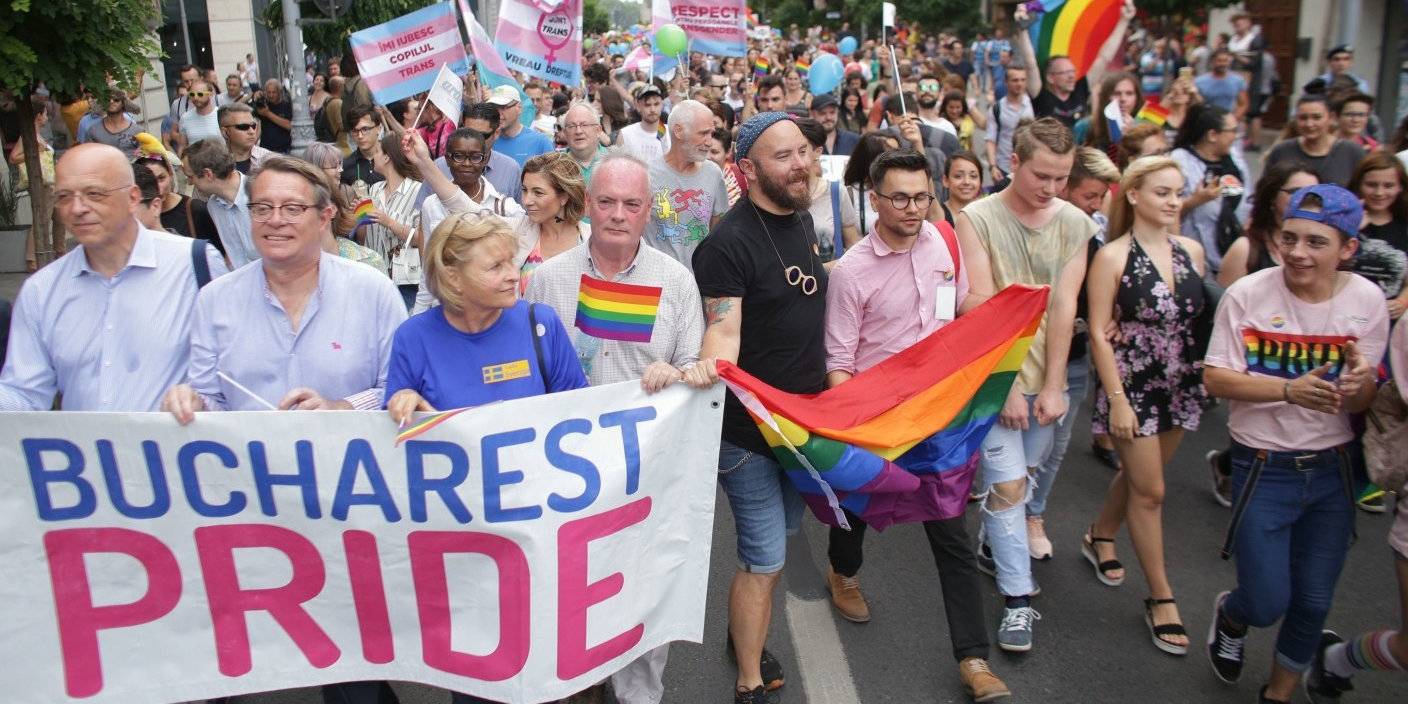
Food and drinks in Romania
The one thing you need to know about eating out in Romania is how much they love wine and cheese. I mean, who doesn’t? Like all Europeans, Romanians take great pride in the dishes they serve. Without further ado, here are some must-try foods to sample!
Papanasi
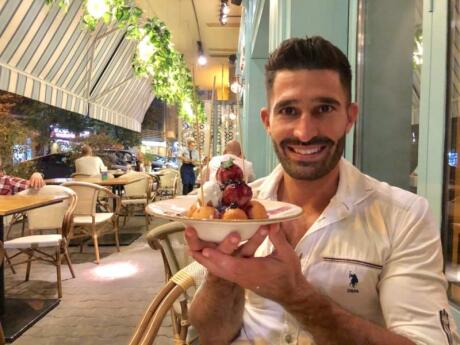
If you didn’t try Papanasi, then you didn’t really go to Romania! They're like a kind of doughnut ball, similar to Dutch oliebollen or the German Berliner, except they have one big ball with a little ball on top, a bit like a hat! Served as a dessert, Papanasi is made from deep-fried dough filled with soft cow's cheese then topped with sour cream and either runny jam or a sour cherry compote. You can find this on any dessert menu throughout Romania – and it's the perfect way to wrap up a three-course meal when you’re on a date night. It’s sweet, light (just like us!) and absolutely delicious.
Sarmale
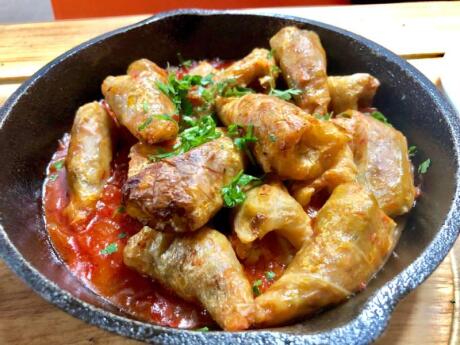
When you're on your holiday, the last thing you want to think about is trying something healthy. But the Sarmale dish doesn’t even feel like a nutritious meal. It’s packed full of the good ole’ green stuff…. By which we mean cabbage, what were you thinking of?! Sarmale is made by wrapping cabbage or vine leaves around minced meat, rice, eggs, and spices. Similar to dolmades from Greece, although the Romanian fillings are slightly different. Sarmales are usually served with sour cream or Mamaliga (more about that below). Sarmales are particularly popular in the Wallachia region of Romania.
Ciorba de Fasole in Paine
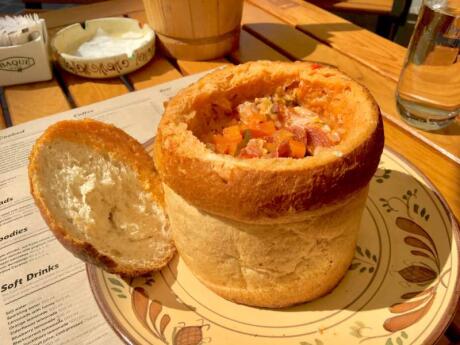
Anytime you see the word “Ciorba” in Romania you know you're getting soup, and you can’t get any more authentically Romanian than the Ciorba de Fasole in Paine. Served in a bowl made from bread, this bean soup works as a great entrée or side dish for your meal but can definitely be filling enough all on its own! It often comes served with a mix of fresh vegetables and can be enjoyed hot or mild. We tried this on a relatively cold day during our trip and it warmed us right up. The mix of spice and sweetness of the beans hit the spot and worked as a great starter for the rest of the meal.
Mici
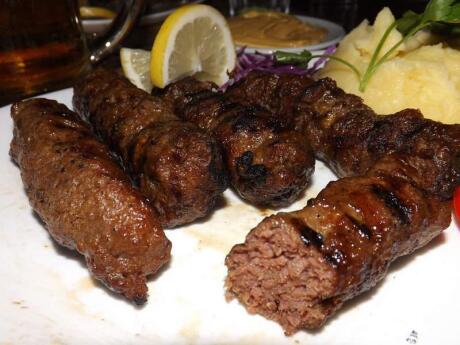
This tastes much nicer than it sounds, trust us! Mici (also known as Meech or Mititei) are grilled sausages, which are made from a mix of beef and spices. Expect to see it being served up in diners or fast food places. One of the best things about Mici, besides its taste, is how it was invented. It is believed that the owner of a busy pub in Bucharest ran out of casing for his sausages one day, so he instead decided to cook the sausages on the grill, with only its filling. And sure enough, it became a hit! For Romanian barbeques or summer parties, Mici is often the most popular food item going.
Visinata
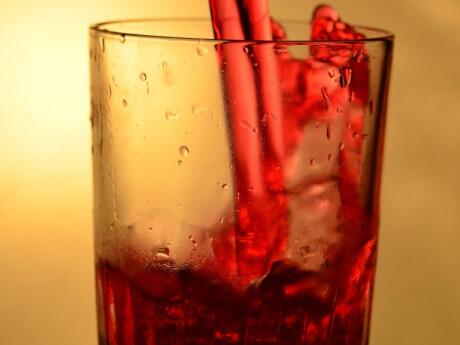
Sweet tooths and lushes unite! Visinata, or Vishinate, is a super sugary, cherry flavoured alcoholic drink in Romania – kind of like a sour cherry liqueur. With no particular recipe, each Romanian has their own unique way of making it. The most common method is mixing sour cherries with sugar over a few days so they ferment, then adding vodka to stop the fermentation. Because it's so cheap and easy to make, it gets drunk a lot! No party in Romania is truly complete unless everyone is holding a glass of Vishinata in their hand, especially in the humid summer months.
Mamaliga
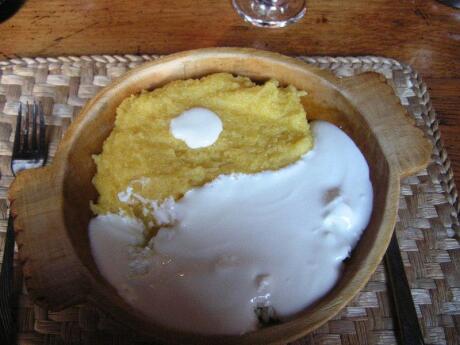
If the musical ‘Oliver’ were set in Romania, the famous little orphan would have asked for more mamaliga. But what is it? Mamaliga is a porridge made from yellow corn flour, and if anyone is known for their love of mamaliga, it is the Romanians. In fact, it is so Romanian, that even the character Jonathan Harker from Dracula starts off his day eating it when travelling through Transylvania! One of the opening lines in the famous Bram Stoker novel reads “I had for breakfast more paprika, and a sort of porridge of maize flour which they said was ‘mamaliga”.
Cozonac
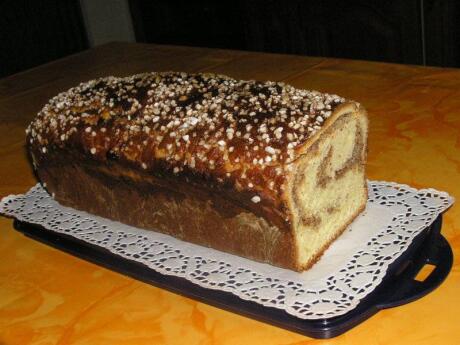
For a light snack to munch on whilst exploring the elusive sights of Romania, you can’t go wrong with a slice of Cozonac. It's a type of sweet leavened bread, made with walnut paste, poppy seeds and other additions, depending on the region. People from different parts of the country may also add raisins, orange or lemon zest, nuts or different essences such as vanilla or rum. Cozonac definitely hits the spot for those sugary cravings of an afternoon. It's typically served during the Easter or Christmas period, with tins of the stuff flying off the market shelves. Sure beats a box of Roses, we think!
Ciorba de Burta
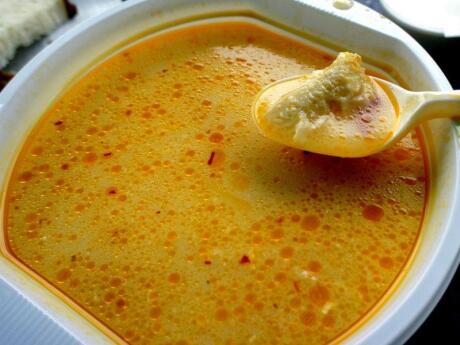
Ok, it may not look that great, or even sound that wonderful, but for a punchy starter to your meal, you need to try the Ciorba de Burta. It's a beef tripe soup, topped with sour cream, vinegar and a garlic dip, known as ‘mujdei’, but is much more delicious than you might think. Romanian journalist Radu Anton Roman described it as “sour and sweet, hot and velvety, fatty but delicate, eclectic and simple at the same time”! Romanians also swear that this is the ultimate hangover cure, so if you do plan on going hard on the town on one evening, make sure to hit up the nearest food place serving up Ciorba de Burta the following morning!
Varza a la Cluj
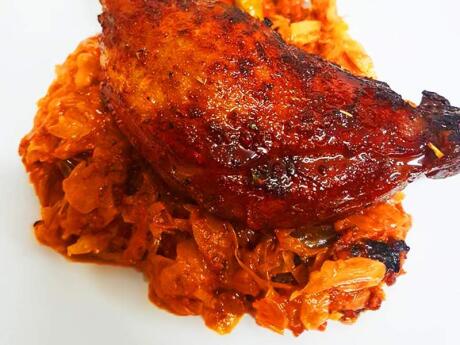
A Cluj-style cabbage dish that is all the rage in the northern regions of Romania, Varza a la Cluj is one of the oldest recorded recipes from the whole country! The base of the recipe is pickled cabbage, which is chopped up then boiled along with meat (usually chicken or goose) and plenty of pepper. Romanian parents never had to tell their kids to eat their vegetables to grow up big and strong, since all over the country cabbage is a beloved food! If you get the chance to try this delicacy from Cluj, make sure you take it. You just might be converted into a cabbage-lover yourself…
Plan your trip to Romania
We've put together some handy hints and tips to help you plan your own trip to Romania. Read on to find out everything the gay traveller should know before they go.
Travel insurance: In case of accidents, thefts or cancellations, you need to have travel insurance when travelling, and Romania is no exception. We use, love and recommend Heymondo Travel Insurance because they offer affordable and comprehensive cover for all manner of problems you might encounter. It's also really easy to make a claim online if you need to.
How to get there: You can get to Romania by land via trains, buses or car from bordering countries but the easiest and (in our opinion) best way to visit is by flying into one of the international airports, particularly the two just outside of Bucharest. Many budget airlines go here from the major European cities. From Bucharest airport, you can reach the city centre via bus or train but be careful of local taxis as taxi scams are one of the most common crimes in Bucharest. We like to organise a private airport transfer with Welcome Pickups on arrival, as they provide professional, English-speaking drivers to meet you at the airport and take you straight to your accommodation without any hassle.
Visa requirements: Citizens from most European countries, America, Canada, Australia and New Zealand don't need a visa to stay in Romania for up to 90 days as a tourist. If you're travelling from somewhere else or just want to make sure, you can check your personal visa requirements for Romania here.
Getting around: Most Romanians don't have cars, so there's a good public transport system within the country consisting of trains, buses, light rail and a metro system in Bucharest. Here's a handy guide on getting around within Romania.
Power Plugs: Power plug type F is used in Romania, which also works with types C and E. Travellers from most European countries won't have any issues but if you're travelling from the UK, US, Australia and many other countries then you will need to bring a travel adaptor with you.
Vaccinations: Before travelling to Romania you should make sure you're up to date with routine vaccinations like measles, mumps and chickenpox, as well as getting vaccinated for Hepatitis A. Some travellers may also need vaccinations for Hepatitis B and rabies, depending on what you'll be doing. Check the CDC website for the most up to date info before you head to Romania.
Currency: The currency in Romania is called the Romanian leu, for which the currency code is RON although it's often written as lei in the plural form. $1 US converts to about 4.32 lei, €1 is worth about 4.75 lei and £1 is around 5.47 lei.
Tipping culture: Salaries in Romania are generally low, so it's expected that you would leave a tip for good service at restaurants, hotels or for your taxi driver or tour guide. Generally, a tip of 5-10 lei or 10-12% of your bill is acceptable, but you can read more about tipping etiquette in Romania here.
Internet access: If you want to get online you'll usually be able to access free WiFi in hotels, cafes, restaurants and bars in Romania, particularly in Bucharest. If you will be travelling to more rural areas and/or know you're going to need a lot of bandwidth then you may need to bring a portable WiFi device with you.
Online privacy: There isn't any internet censorship in Romania, so you will be able to use gay dating apps like Scruff or Grindr to connect with locals. If you just prefer to keep your online activities anonymous then we recommend ExpressVPN. Their VPN service is an affordable and reliable way to browse the internet with complete privacy.
Accommodation: We always use Booking.com when searching for accommodation and they have lots of excellent choices within Romania! Not only that but they offer excellent 24/7 customer support, an easy to use online booking system and free cancellation for many listings if your plans change.
Sightseeing and adventure: There are lots of exciting things to see and do in Romania, even beyond the ones we've already mentioned. We always use GetYourGuide to find the best tours, day trips and tickets for attractions in Romania, and definitely recommend them. The online booking system is easy to use and they also have excellent customer support available 24/7.
When to visit: Romania has four distinct seasons, with cold winters and hot summers. We personally think spring and autumn are the best times to visit so that you can avoid any extremes in temperature and the tourist crowds – plus you'll get to see spring blossoms or autumn leaves!
Safety tips for gay travellers
Is Romania safe for gay travellers? The short answer is yes, but you should exercise caution about flaunting your sexuality in public unless you're in a gay bar or club such as the ones found in Bucharest. While we didn't feel unsafe at any time in Romania, we did find the attitudes of some establishments to be rather archaic, as we mentioned above with some of the hotels we approached before our visit.
- Check official government advice before you go. This should really go without saying for any kind of travel: always check what your country's official government advice is on travelling to any destination. Here's the latest travel advice for UK residents to Romania, but make sure you check your own government website if you are travelling from elsewhere.
- Although homosexuality is legal in Romania, it's best to avoid public displays of affection outside of any gay clubs or bars. Unfortunately, Romania is quite homophobic, so we don't recommend you flaunting your gay fabulousness unless you're in an actual gay bar or club like the ones in Bucharest.
- Just like anywhere in the world, be aware of your surroundings, especially in big cities. Traffic can be different from what you are used to and obvious tourists are always seen as the easiest pickings for thieves. But if you're paying attention to what's going on around you, you should be fine.
- Avoid excess alcohol and drug use. It's far more likely that you will be taken advantage of, scammed or even robbed if you are obviously intoxicated. Sure, have a few drinks and a good time, but if you're going to get wasted, it's probably better to do that in a familiar environment.
- Don't wear valuables in public. Pickpockets operate everywhere, and the flashier your belongings, the more attractive you are as a target. Leave your valuable and important items in your hotel safe so even if you do find something missing, hopefully, it won't be anything too irreplaceable.
- Invest in a good money belt. It's always better not to carry too much cash or credit cards anyway, but having a good money belt that hides under your clothes is another way to ensure nothing goes missing.
For more inspiration:
- Make sure you also check out our gay guide to Tbilisi
- You might be surprised by these gay friendly cities in East Europe
- Although you probably won't be surprised by what we rate as the gayest cities in Europe!
- If you're travelling on a budget make sure you check out these awesome gay hostels in Europe
- As well as one of our favourite places, the fabulously gay city of Barcelona
- Speaking of Barcelona, these are the best gay pride events which take place in Spain
- So you're going to need some inspiration for sexy gay pride outfits
- Make sure you also pack these useful and fabulous gay pride accessories
- Read what we think are the best gay Pride events in the world.
Like this post? Pin it
